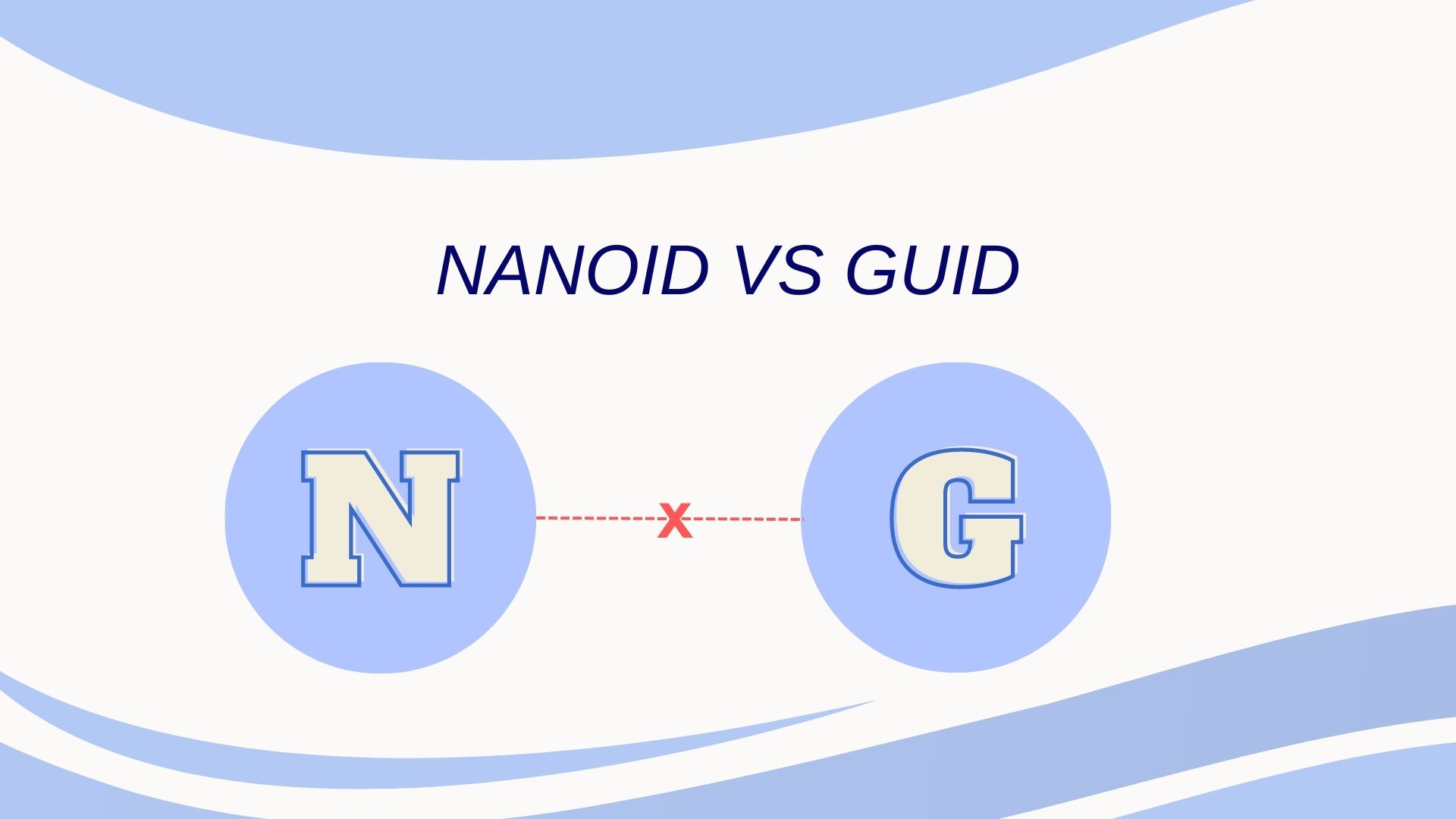Introduction
When it comes to generating unique identifiers for your application, two popular options are NanoID and GUID. It may become important however that one is preferred over the other in certain scenarios. Let us dive deep into the features, advantages, and disadvantages of both approaches to help you make an informed decision.
NanoID
NanoID is a tiny, secure, and URL-friendly unique ID generator for JavaScript. It is designed to have a similar API to GUID, but with a smaller footprint. Here are some key points to consider:
const { nanoid } = require("nanoid");
// Generate a NanoID
const id = nanoid(); // e.g., 7C9s_Hv9WEu6dO8xjC8YXSize and Speed
NanoID is incredibly small, weighing in at just a few kilobytes. This makes it ideal for applications where file size matters, such as mobile apps. Additionally, NanoID is lightning-fast, generating IDs in a matter of microseconds, making it an excellent choice for projects that require high performance.
URL-Friendly
One of the standout features of NanoID is its URL-friendliness. The generated IDs consist only of URL-safe characters, which means you can use them in URLs without worrying about encoding or decoding issues.
Cryptographically Secure
NanoID leverages the crypto module in Node.js to generate cryptographically secure random numbers. This ensures that the generated IDs are highly unpredictable and virtually impossible to guess or manipulate.
GUID (Globally Unique Identifier)
GUID, also known as UUID (Universally Unique Identifier), is a standard for generating unique identifiers across different systems. Here’s what you need to know about GUID:
const { v4: uuidv4 } = require('uuid');
// Generate a new GUID
const newGuid = uuidv4(); // e.g., 6a4f429d-e1c1-498c-be06-2aa5039c99f3Universal Uniqueness
The primary advantage of GUID is that it guarantees universal uniqueness. This means that no two GUIDs generated anywhere in the world will ever collide. This property makes GUIDs ideal for distributed systems where uniqueness is critical.
Length and Format
GUIDs are typically represented as a 32-character hexadecimal string separated by hyphens. The resulting length is 36 characters. While this may seem long compared to NanoID, the advantage of GUID lies in its universally unique nature, making it suitable for systems that require absolute uniqueness.
Cross-Platform Compatibility
GUIDs are widely used and supported across different platforms and programming languages. They have become a standard for generating unique identifiers, making it easier to integrate them into existing systems and libraries.
Conclusion
Choosing between NanoID and GUID depends on your specific requirements and use case. If you prioritize size, speed, and URL-friendliness, NanoID is an excellent choice, especially for web and mobile applications. On the other hand, if you need guaranteed universal uniqueness and cross-platform compatibility, GUID should be your go-to option.
Both NanoID and GUID have their strengths and weaknesses, so make sure to carefully evaluate the unique needs of your project before making a decision. Whichever option you choose, rest assured that you will have a reliable and secure way to generate unique identifiers for your application. Happy coding!



